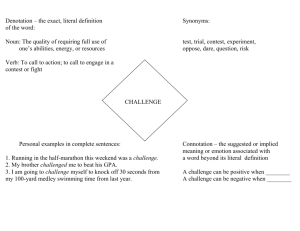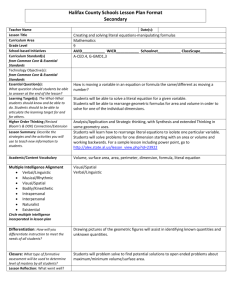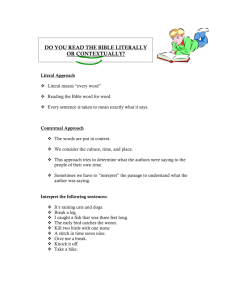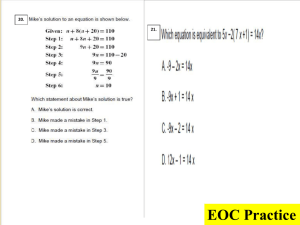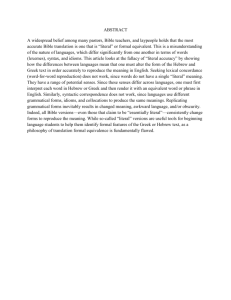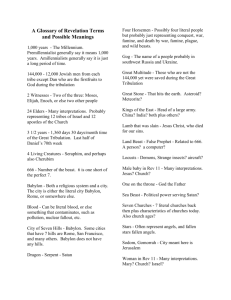BQAERLA: a formula for (most) hypothesis
advertisement
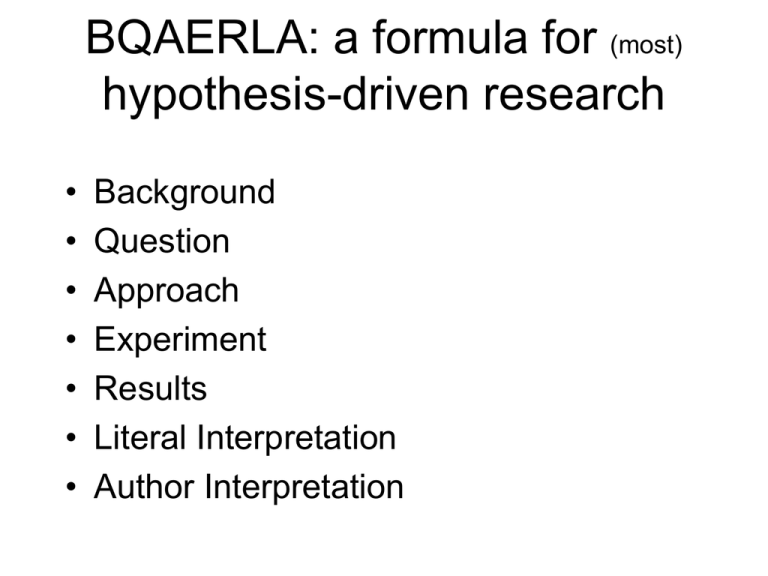
BQAERLA: a formula for (most) hypothesis-driven research • • • • • • • Background Question Approach Experiment Results Literal Interpretation Author Interpretation Background • Summary of what is currently known about the subject/topic/protein/gene/process/etc. • Sets up the Big Question and the smaller questions that are current in the field and specific for the study Question(s) • subdivided into The Big Question and smaller subquestions • The Big Question is one that drives research in the field as a whole • subquestions drive individual studies (papers) and individual experiments Approach • The Approach lays out in a general sense how the question will be addressed • It does not encompass experimental details Experiment and Results • The Experiment includes the relevant detail needed to understand scope • Results are usually figures/pictures/graphs/tables/etc. Results do not encompass any interpretation (comparative or judgemental, etc.) What’s the difference between Literal and Author Interpretations? • Literal interpretations are simple, logical extensions of the Results (they are also known as Conclusions) • Author interpretations put the Literal interpretations into the context of the Big Question and often include some speculation and/or more questions Biol-311L Cell Biology Techniques Oral Presentation Instructions Prepare a 10-12 minute presentation using PowerPoint. You will present your PowerPoint to a group of colleagues at one of the presentation sessions (date and time TBA, see BlackBoard). This presentation is physically due by email or on some sort of disk (floppy, CD or ZIP) three hours before the start of the session. The order of presentations will be determined at the beginning of the session, so be prepared to go first. If you made the presentation on a home/personal computer, then you should try it on a college computer prior to submitting it. Consider the following: What Background information needs to be understood? What cellular processes and what are the Big Questions about the cellular process? What gene/protein are you talking about? What is known about this protein? Does it have any interesting domains? What are their molecular/biochemical functions? Does it have relatives (paralogues or orthologues) and what do they do? How are the biochemical functions and cellular role required by the tissue and whole organism? What is not known? Questions? The focus of the presentation is one to three figures worth of primary data. The data that you present may be your own RNAi experiment or published data about your C. elegans gene or a homologue. Data that provides insight into some significant aspect of the biology of the gene/protein is required. What are the Approaches being employed to answer the Questions? Is there an hypothesis (what is the proposed answer to the questions)? What is the Experiment being presented? How did you (or someone else) generate the Result? What is the Result(s)? What is the Literal interpretation of the Result? What can be concluded? What is/are the Author's or your interpretations of the Result? What might be done next? Biol-311 Cell Biology Techniques Evaluation of Oral Presentations Background (10) < Adequate not cl ear or im plied , mistakes in conte nt Question (5) lacking Approach (5) as above Experiment (5) glossing over det ail factu al mis takes Result (5) glossing over data, factu al mis takes Literal Interpretation (5) lacking or too simplist ic Author's Interpretation (5) mistakes in identi fic ation or lacking Average concise and precise description of wh at is currently known made obvious and linked to background (what is not known?) made obvious and compared to alter natives compl etely and precisely explained with rele vant techn ical detail define /explain what figures depi ct including s cales, axes and a ll other releva nt elements explain and ide ntify the con clusion identify how t he data mo ve the field forward, eval uate authorΥs bias Outstanding 'hook' provided with releva nt and adequate detail as above with description of the significa nce and releva nce links Background to Question, compa red to other possibilit ies as above with compl ete understanding of caveats as above with accur ate, rele vant detail and mention of shortcomings separate li teral from author in terpretation and cri tic ally evalu ate both as all of the above 2004 Cohort 4.700 4.600 4.500 4.400 4.300 4.200 Series1 4.100 4.000 3.900 3.800 3.700 1 2 3 4 5 6 2005 Cohort 4.900 4.800 4.700 4.600 4.500 4.400 Series1 4.300 4.200 4.100 4.000 3.900 3.800 1 2 3 4 5 6 Peer Evaluation (2004 cohort) 4.800 4.750 4.700 4.650 4.600 Series1 4.550 4.500 4.450 4.400 4.350 1 2 3 4 5 6 The “Formula” • • • • • • • Background Question Approach Experiment Results Literal Interpretation Author Interpretation The “Formula” • • • • • • • Background Question Approach Experiment Results Literal Interpretation Author Interpretation Sections of a research paper Abstract Introduction Materials and Methods Results Discussion The “Formula” • • • • • • • Background Question Approach Experiment Results Literal Interpretation Author Interpretation Sections of a research paper Abstract Introduction Materials and Methods Results Discussion The “Formula” • • • • • Background Question Approach Experiment Justification The reasons a proposed experiment is important, necessary, logical, interesting, etc. Sections of a research proposal Background Specific Aims The “Formula” • • • • • Background Question Approach Experiment Justification The reasons a proposed experiment is important, necessary, logical, interesting, etc. Sections of a research proposal Background Specific Aims

